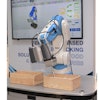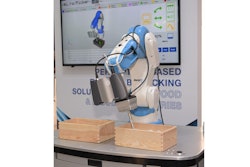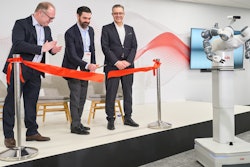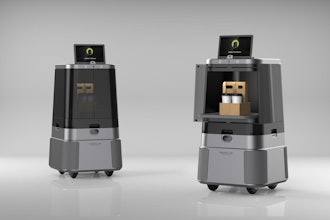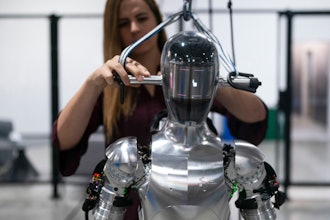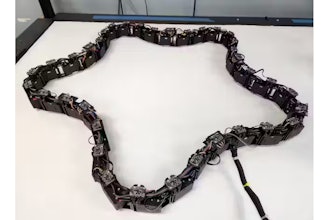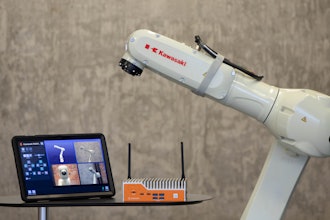
Remote operations capacity is critical for manufacturers striving to achieve operational continuity during a uniquely disruptive time. Unfortunately, while some sectors are well-suited for the rapid and far-reaching transition to remote work, some in manufacturing are less prepared, making it even more critical that leaders tackle this priority with care and excellence.
A 2020 survey of more than 50,000 manufacturing sector employees found that less than half have remote work experience. At the same time, remote operations capacity, which gives workers the ability to interact with physical infrastructure, can be more challenging than less nuanced remote roles. Even so, a hybrid workforce combining on-site and remote employees will play a pivotal role in the manufacturing sector’s ability to weather the storms of this moment, and develop strategic technologies for next-generation capabilities.
In this way, the transition to a hybrid workforce represents both a challenge and an opportunity, which leaders are best positioned to achieve when they target specific priorities.
#1 Functionality
Managing remote teams in a manufacturing environment often requires specific Operational Technology (OT) capabilities, which cannot be found with traditional enterprise IT tools. Automation and Controls Managers need to monitor and collaborate with remote and on-site staff in unique ways. Troubleshooting OT issues often require more detailed user access forensics including user access recording.
In addition to the facility-specific requirements, manufacturers need comprehensive solutions that account for each of these responsibilities. These tasks are as dichotomous as they are interdependent, and an effective embrace of a hybrid workforce will account for the unique needs of the manufacturing sector.
For example, manufacturing downtime is one of the leading constraints on profitability. When complicated machinery is inoperable, manufacturers need immediate solutions. Remote operations capacity allows specialists from around the world to immediately assess the problem, provide solutions, and dispatch on-site employees to implement a cure.
At the same time, equipping managers and engineers to remotely monitor on-site production and review IT forensics can help keep facilities operational, even when staff is distributed by choice or necessity.
#2 Cybersecurity
As manufacturing facilities become even more technologically advanced, they are increasingly vulnerable to cyber attacks that compromise system integrity and company data.
Reporting on the state of cybersecurity in the manufacturing industry, Deloitte found that nearly half of executives “lack confidence they are protected from external threats.” A hybrid workforce accelerates these concerns, as remote work poses additional cybersecurity risks that need to be addressed. Most notably, remote workers need the capacity to easily and securely access critical infrastructure without compromising cybersecurity.
Unfortunately, many traditional defensive measures, like VPNs and jump servers, are insufficient defenses for remote operations. In addition, manufacturers need:
- Multi-factor authentication capability.
- Granular visibility and control of system access.
- Session recording capability.
- Staff training protocols.
Cybersecurity failures are very expensive. In addition to difficult to define reputation damage, a cybersecurity failure comes with high recovery and opportunity costs that make manufacturers less competitive and sustainable in an already challenging environment.
#3 Accessibility
New and better technologies are only beneficial if workers can easily use and deploy technology to support tangible outcomes. Therefore, leaders need to prioritize accessibility alongside functionality and cybersecurity as a key component of adoption and implementation.
Along the way, they are likely to encounter dubious employees who are untrained and unconfident in their technical remote working skills. By turning to technology that is easy to deploy and simple to use, leaders can remove as many hurdles as possible, making the transition as rapid and seamless as possible.
In response to the challenges facing the manufacturing sector, the World Economic Forum notes, “The industrial companies that take bold action to shore up their workforce and technology investments will emerge more resilient, and more likely to succeed no matter what uncertainties come their way.” The transition to remote work may have been a short-term band-aid for manufacturers, but it’s also an enduring strategy for future success.
Manufacturers that can diversify their operational capacity, making it possible for more people to remain productive, regardless of on-the-ground circumstances, will be best positioned to navigate today’s challenges and prepare for tomorrow’s opportunities.
Undoubtedly, it’s a tough challenge, which makes focusing on the right priorities even more essential.
Bill Moore is the CEO and Founder, XONA, providers of a unique “zero trust” user access platform especially tailored for remote Operational Technology (OT) sites.

